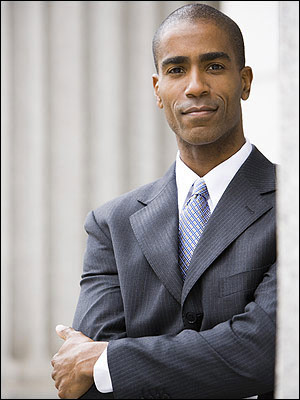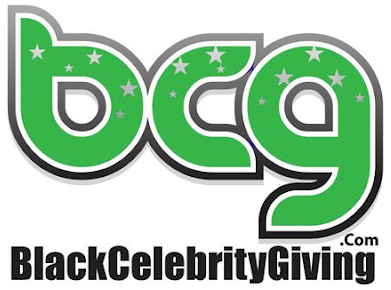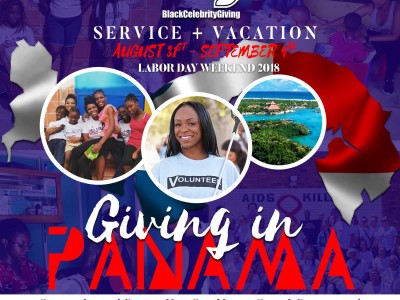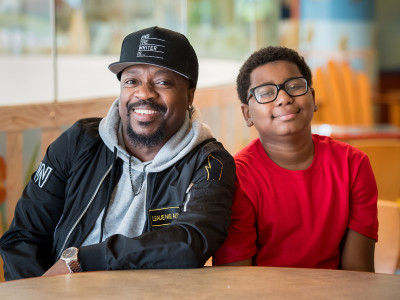 Everyone has heard about the great philanthropic efforts of well-known celebrities like musician and entertainer Alicia Keys, rapper and poet Common and NBA star Dwayne Wade. But, how about the average person who performs great philanthropic feats, but goes unnoticed?
Everyone has heard about the great philanthropic efforts of well-known celebrities like musician and entertainer Alicia Keys, rapper and poet Common and NBA star Dwayne Wade. But, how about the average person who performs great philanthropic feats, but goes unnoticed?
According to a new report by released by the W.K. Kellogg Foundation, there is a growing number of “average” people – plumbers, hairdressers, nurses and civil servants – who are donating their money to help their communities.
 In fact, the report “Cultures of Giving Energizing and Expanding Philanthropy By and For Communities of Color” reveals African Americans give away 25 percent more of their income per year than whites and 63 percent of Latino households now make charitable donations. And, we’re are donating through new, more accessible methods, like the Internet, texting and other grassroots channels.
In fact, the report “Cultures of Giving Energizing and Expanding Philanthropy By and For Communities of Color” reveals African Americans give away 25 percent more of their income per year than whites and 63 percent of Latino households now make charitable donations. And, we’re are donating through new, more accessible methods, like the Internet, texting and other grassroots channels.
Not only does the report shed light on the encouraging trends found in this movement of self-help–or “identity-based”–philanthropy within communities of color, but it also issues a call to action for foundations, funders and major donors to embrace this emerging area of giving if they want to truly drive social change.
The W.K. Kellogg Foundation was one of the first to study and support identity-based philanthropy and it has become the largest single funder of identity-based funds in the country.
Supplemental Information
The face of philanthropy is changing. Throughout history, the word “philanthropy” has been used almost exclusively to describe the generous giving of large sums of money—typically by millionaires and billionaires. It’s no surprise, then, that philanthropy came to be perceived as the elite turf of the wealthy. Sure, “everyday” people might read about philanthropy in the headlines. They might even benefit from its generosity in direct or indirect ways. But they weren’t the subject of the sentence. They weren’t perceived as the doers of philanthropy.
Well, that was the old philanthropy. In recent years, the definition of philanthropy has begun to widen to include a larger swath of human generosity. Under this budding definition, “philanthropy” encompasses any-size contributions not just from the wealthy, but from people of every income bracket. It includes donations not just of money but of time and know-how. And its practitioners aren’t just the elite and the white. They are nurses, plumbers, hairdressers, and civil servants. They are African American, Latino, Native American, Arab American, and Asian American. And rather than practice their philanthropy in isolation, these everyday philanthropists are pooling their money—in increasingly organized ways—for greater impact.
This groundbreaking movement to activate and organize giving within and on behalf of America’s communities of color—known as identity-based philanthropy—is the subject of this report. In the early 1990s, the W.K. Kellogg Foundation became one of the first major foundations to study and support this emerging field. Since then, we have become the largest single funder of identity-based funds in the country. Much of that funding has been organized through one key program—Cultures of Giving—the strategies and lessons of which are described in the pages that follow.
Our founder, Will Keith Kellogg, believed that people have the inherent capacity to help themselves. Cultures of Giving is an extension of that belief. But our work is not done. Identity-based philanthropy is still a seedling within the larger field of philanthropy. Yet everything we’ve seen and experienced tells us that supporting this emerging area of philanthropy is essential for any foundation, funder, or donor who wants to drive social change.
This report shares our journey so that others might learn from both our successes and our mistakes. It also challenges fellow funders to consider new ways to collaborate with and advance the impact of identity-based philanthropy: by providing seed support and other forms of assistance; by embracing identity-based funds as critical partners in the sector and forging stronger connections with philanthropic leaders and other change agents within communities of color; by diversifying the leadership of mainstream philanthropy to reflect our nation’s changing demographics; and by shifting our practices to reflect what communities of color are teaching us about the future of giving and how we can positively impact our country’s most vulnerable children and families.
We also hope that this report inspires everyday givers—of all backgrounds, genders, races, and ethnicities—to embrace their power as philanthropists.





